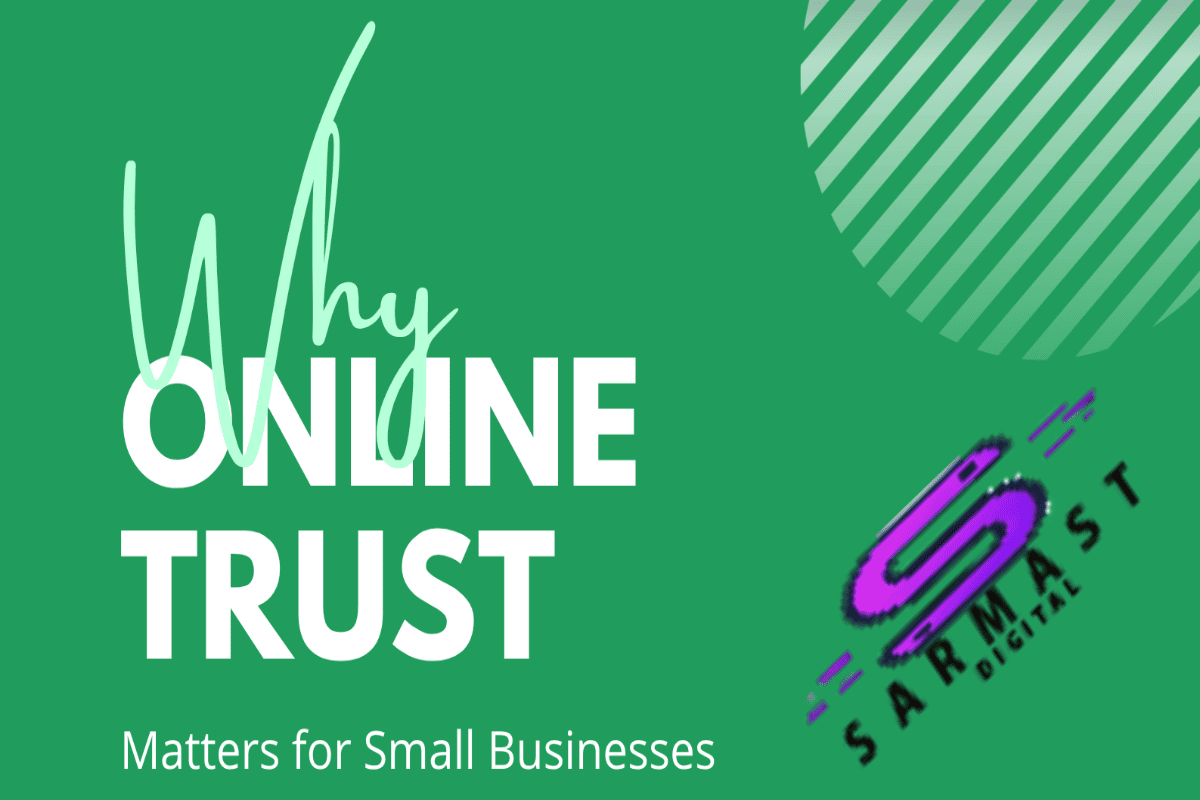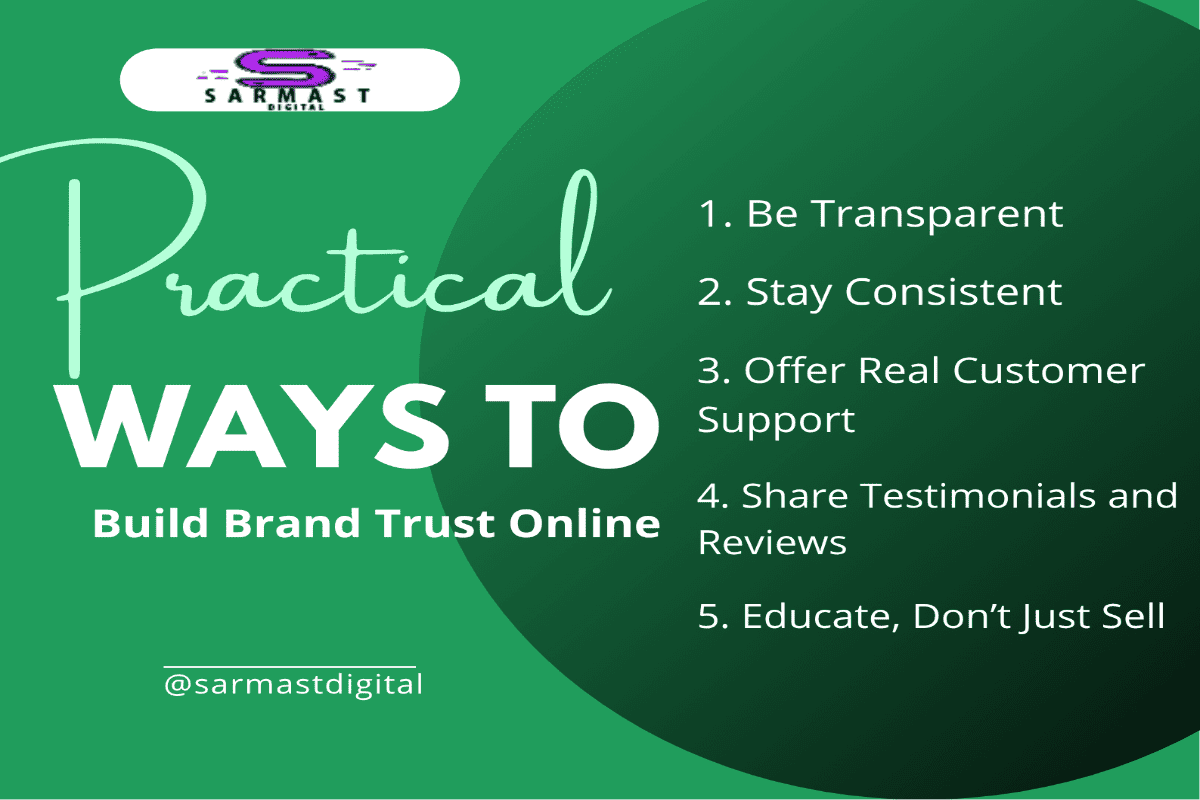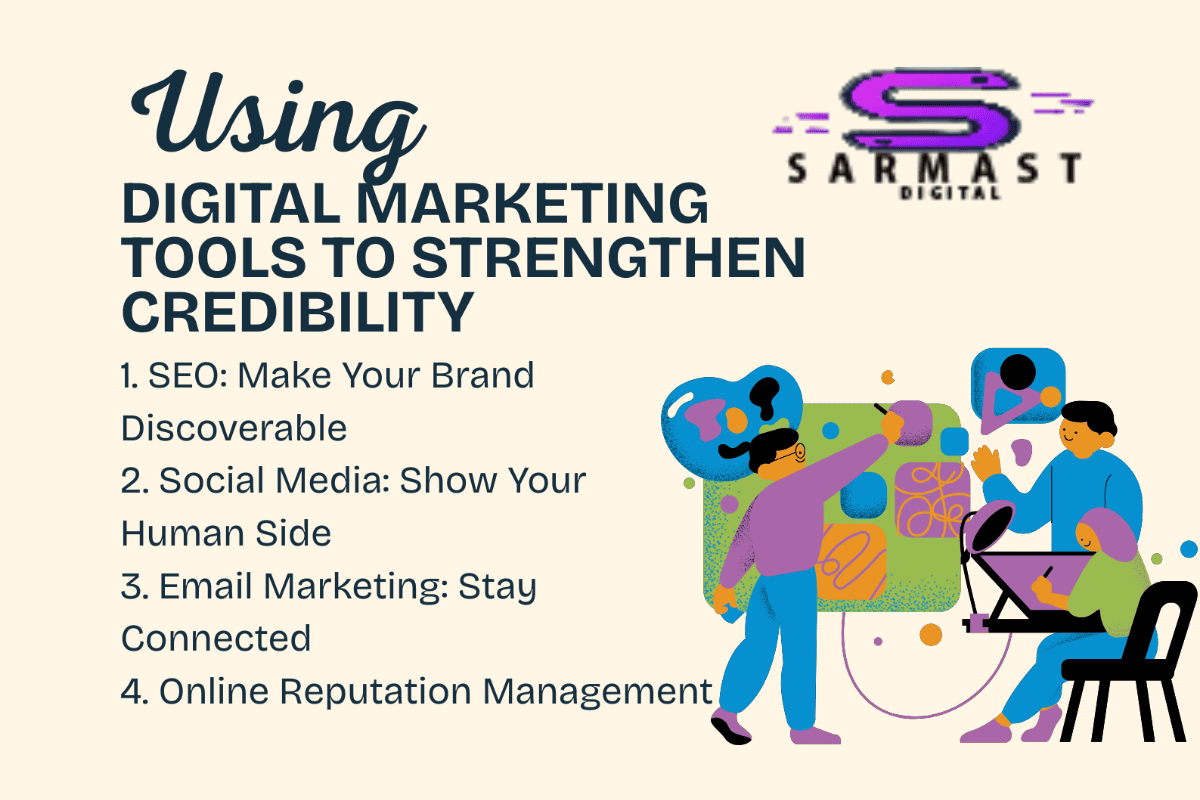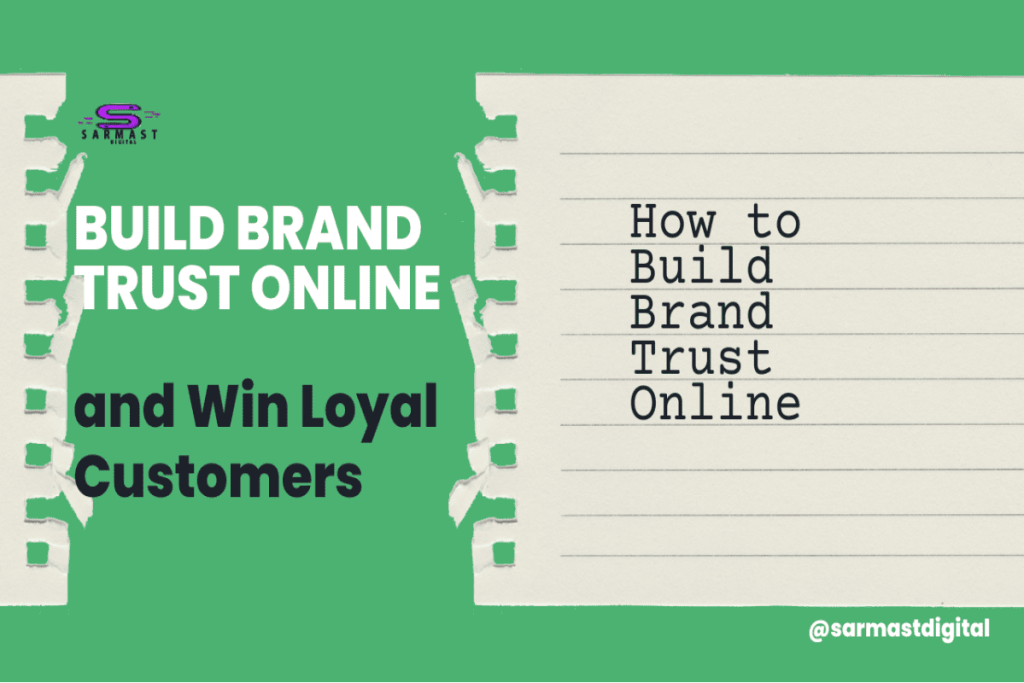Introduction
Let’s be honest—getting people to trust your business online isn’t easy.
You might have a great product and friendly service, but in today’s crowded digital world, new customers often ask the same silent question:
“Can I really trust this brand?”
If you’ve ever felt that frustration, you’re not alone.
Many small businesses struggle to turn online visitors into loyal customers because they haven’t yet built enough digital credibility.
In this article, you’ll learn how to build brand trust online using practical, real-world steps. We’ll explore why trust matters, which mistakes to avoid and how digital tools like SEO and social media can help you create a brand people believe in.
Why Online Trust Matters for Small Businesses
Trust is not just a “nice to have” — it’s the foundation of every successful business relationship.
When customers trust you, they buy from you, recommend you and return again. Without trust, even the best marketing can fail.
In fact a 2024 survey by Edelman showed that 81% of consumers need to trust a brand before they make a purchase. That’s a big number—and it shows why small businesses must focus on trust first, sales second.
Think about your own experience. When you see a brand with poor reviews or no real online presence, do you risk your money there? Probably not.
But when a business has clear information, positive testimonials, and honest communication, it feels safer to buy.
💡 Tip: If you’re still defining your brand identity, read What Is a Brand (and Why Small Businesses Need One) to start with a strong foundation.

Practical Ways to Build Brand Trust Online
Let’s break it down into simple, actionable steps.
Here’s how you can start building real customer trust—without a huge budget.
1. Be Transparent
Show your real story. Talk about who you are, what your values are, and how your business started.
People connect with people, not logos.
Transparency means being open about your prices, your process, and even your challenges.
For example, a small handmade jewelry shop could post a behind-the-scenes video of how their pieces are made. That openness builds authenticity.
2. Stay Consistent
Your voice, design, and messaging should match everywhere—on your website, Instagram, and emails.
If your tone changes from friendly to formal, customers may feel confused.
Consistency makes your brand more predictable, and predictability builds trust.
3. Offer Real Customer Support
Fast, kind, and helpful responses can turn problems into opportunities.
Even a short, warm message like “Thanks for your patience—we’re fixing this right away!” shows you care.
Don’t let questions go unanswered for days. A quick, honest reply is more valuable than a perfect one.
4. Share Testimonials and Reviews
Let your happy customers do the talking.
Add reviews, testimonials and even screenshots of positive feedback to your website and social media.
When potential buyers see real stories from real people, it strengthens your digital credibility.
5. Educate, Don’t Just Sell
Post blogs, short videos or guides that help your audience solve their problems.
For example, if you sell eco-friendly candles, share tips on creating a calm home atmosphere.
Helpful content turns you into a trusted expert rather than just another seller.

Using Digital Marketing Tools to Strengthen Credibility
You don’t need to be a marketing genius to use digital tools effectively.
Let’s see how a few simple strategies can help you build brand trust online.
1. SEO: Make Your Brand Discoverable
Search Engine Optimization (SEO) helps your website appear when people search for solutions you offer.
If customers find your business easily and your content matches their intent, they’ll view you as more reliable.
For example, imagine a local bakery that writes helpful blog posts like “How to Choose the Right Cake for Any Event.”
When that post ranks high on Google, it automatically boosts the bakery’s authority and trust.
2. Social Media: Show Your Human Side
Social platforms like Instagram, LinkedIn and Facebook aren’t just for ads—they’re for connection.
Use them to share stories, highlight team members or thank your loyal customers.
Social proof (likes, comments, mentions) helps build emotional trust faster than any ad can.
Pro Tip: Use short videos or Reels to show your brand’s personality. Authentic videos often perform better than polished ones.
3. Email Marketing: Stay Connected
Regular, valuable emails remind customers you’re still around—and that you care.
Send updates, exclusive offers or even educational tips.
For example a small digital studio might send a monthly email about “Simple SEO Fixes for Local Businesses”.
This type of content builds authority and deepens relationships over time.
4. Online Reputation Management
Your online reputation management strategy is like digital hygiene—keep it clean and consistent.
Monitor your reviews, reply politely to criticism and celebrate your wins publicly.
If someone leaves a negative comment, respond with empathy, not defensiveness.
Customers notice how you handle pressure—it’s often what earns their lasting respect.

Common Mistakes That Damage Brand Trust
Even good businesses can lose trust if they’re not careful.
Here are some common traps—and how to avoid them.
1. Overpromising and Underdelivering
If you promise “fast delivery” but take two weeks, customers remember.
Be realistic about what you can do and always communicate delays clearly.
2. Ignoring Feedback
Silence sends a bad signal. Whether it’s a bad review or a simple question, ignoring feedback makes your brand look careless.
Fix: Respond quickly, show you’re listening and thank the customer for speaking up.
3. Inconsistent Updates
A social page that hasn’t posted in months feels abandoned.
Fix: Plan small, regular updates—once a week is better than a burst of posts followed by silence.
4. Lack of Security and Credibility Signals
If your website lacks SSL (https://), clear contact info or an About page, people may not trust it.
Fix: Add professional contact details, secure checkout options and trust badges.
5. Using Stock Responses or Fake Reviews
Audiences are smart. They can spot fakes easily.
Fix: Keep your voice genuine and honest—even when saying “we’re sorry.”

Conclusion
Building brand trust online doesn’t happen overnight—but it’s one of the best investments your small business can make.
Start with honesty, consistency and empathy. Use digital tools to show up where your audience is and remember: every positive interaction adds to your reputation.

FAQ: Building Brand Trust Online
How long does it take to build brand trust online?
It depends on your consistency and transparency. For most small businesses, it can take several months to a year of steady communication and genuine engagement.
What are the best digital tools for trust-building?
SEO tools (like Google Search Console), social media analytics and email marketing platforms like Mailchimp or ConvertKit are great for maintaining visibility and credibility.
Can small businesses build trust without big budgets?
Absolutely. Trust is earned through honesty, not money. Simple actions—like replying to comments, sharing customer stories and updating your website—make a huge difference.
📱 See It in Action
Watch our short Instagram reel to see how these strategies come to life 👇
big goals, small steps 💫
